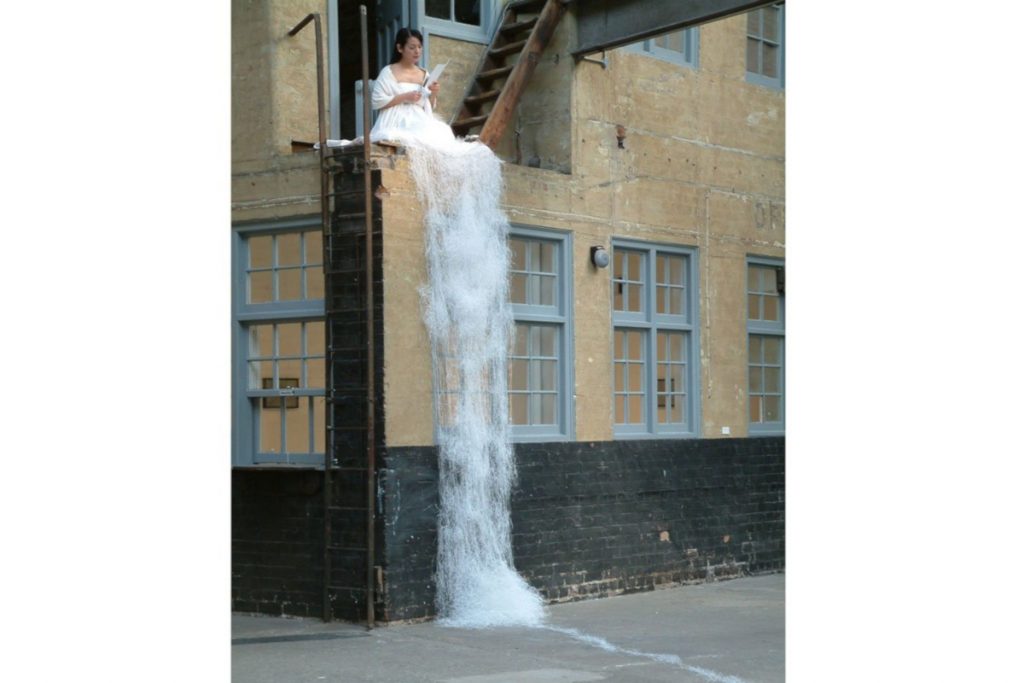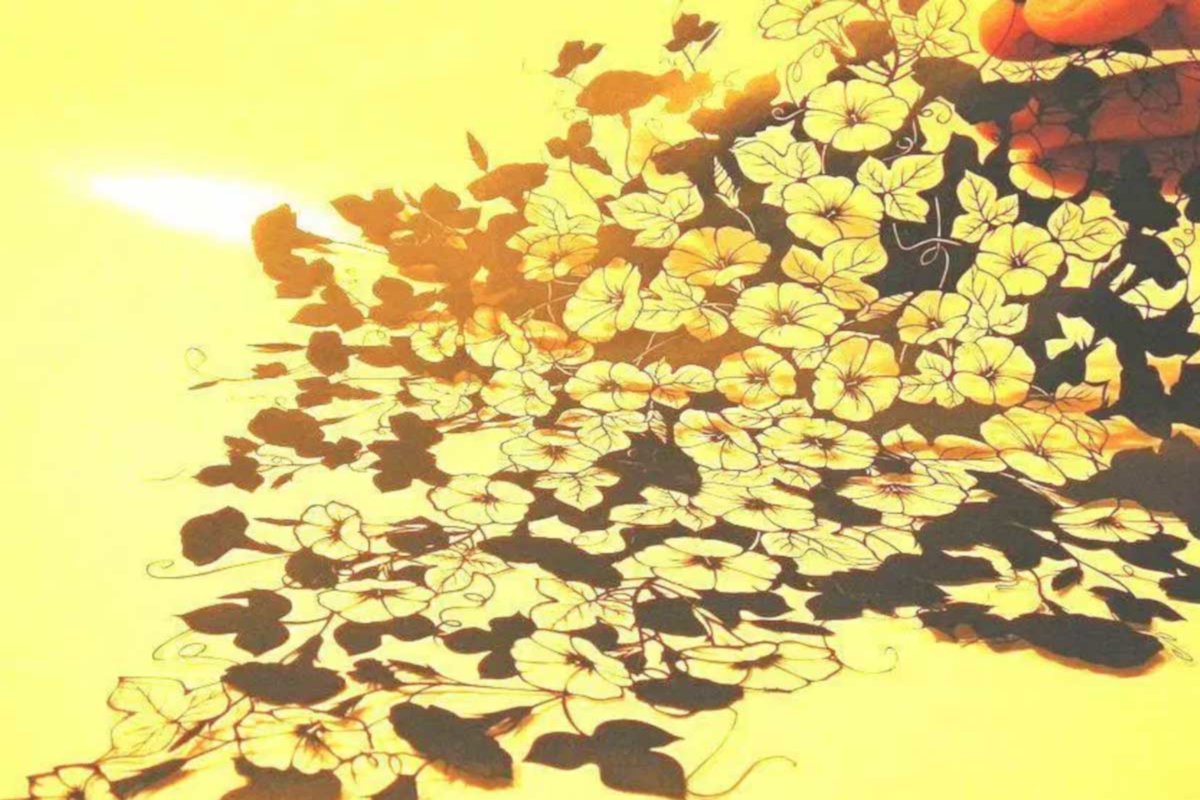Versione Italiana qui

An art in which precision is a must, exactly like cuts, and it is discipline at the same time.
Sharp blades, alone “against” an impalpable opponent, and the final realisation that is revealed in a form that is perhaps difficult to be replicated despite the thousand repetitions and the search for the perfect gesture through a never ending exercise.
It is a typically Japanese art, but it is not a martial and it is not iaido.

It is kirigami, a name that derives from kiru, to cut, and kami, paper, and it is very similar to origami (see also Origami, the art of folding paper), with the difference that, with the same paper folding techniques, in kirigami the main technique in which perfection is sought is the cut. In a more general sense, and which I personally appreciate the most, we should refer to this art with the term kiri-e, literally carved image, an art that has its roots in many cultures around the world, but which in Japan it developed around 600 AD when paper known as Tesuki Washi, invented in China where the paper was made since 105 AD, was imported from Korea by the Buddhist monk Doncho: thus a particular technique and art developed, which the Japanese mastered quickly in a superfine way starting from the 800 when they began to manufacture and market their own paper instead, known as Sekishu Washi. And since everything becomes art, including the production by the mean for its realization, the washi paper produced today and used all over the world to create the kiri-e works has been defined by Unesco as an Intangible Heritage of Humanity at the beginning of this century, designating the importance for an artistic technique that persists in the contemporary world with the creation of works and paper sculptures. In Europe it will be necessary to wait until the 13th century for the introduction of paper and the first realizations of the art of paper cutting dated back three centuries later.

In its most conventional form the kiri-e is made by cutting the negative, empty spaces from a single sheet of white paper, which will then create the contrast with a dark background, in masterpieces that reach enchanting three-dimensionality while starting from a flat surface. Similarly to origami, one of the key points of this art is symmetry: the paper is folded before being cut so that the cuts multiply the same on all faces. Simple designs of kiri-e involve preparatory folds in four, horizontally in the middle and then vertically again in the middle, and by multiplying these folds, remarkable complexity can be achieved. Although technically kirigami, and I now use this meaning precisely because I am referring to the specific use of the substrate, it can be made with any type of paper, it is clear the thinner one is necessary to create those works that require many folds while the cuts they can be done with scissors, although many artists prefer specific knives for greater accuracy and handling.

Although one of the most common applications, as for commercial purposes, particularly for those approaching this art at first, the goal is the making of greeting cards and books defined as pop-ups, those that when the pages are opened reveal more or less complex three-dimensional structures folded in on themselves, the highest form of kirigami involves the creation of real masterpiece of art, unique, which has its origins and the interest shown by the population since the Edo period when it was practiced in public with musical backgrounds.
I like to report the description offered to the works of an undisputed world-wide Master of this art, Kojima Nahoko: you have to imagine an imaginative, natural, delicate, ethereal and elusive world, suspended, free and floating, like dreams. In fact, her works are evanescent and graceful figures made on a large scale and suspended in the air, visible all over the world, such as one of his works exhibited at Villa Olmo in 2012, on Lake Como, a “Cloud Leopard” she hovered in the center of a marvelous empty room in the ancient villa. Another example of her art is Shiro, a sculpture that measures thirtytwo meters and was made with two sheets of paper requiring a year of work to make a life-sized whale.


As for sumi-e painting, the one made with black ink in which the gaps or the absence of brushstrokes help to return the emotion of the complex image, also in kiri-e the greater the simplicity, the greater the depth of the sensations that the work will arouse, but a fact remains as that of the most refined exhibited works all over the world do not imply an extraordinary complexity, demonstrating the incredible quality, ability and constancy of the artists involved in this art.
Fukuda Masayo is another of these great artist, for over thirty years she dedicated to this art, where dedication, patience and precision are required: for the realization of one of her most known work, Octopus, the carving required two months of work, and by carefully balancing the thickness of the spaces and lines, she finally managed to create a three-dimensional effect, a peculiarity that distinguishes her from other artists who use the same technique.


Most of the kirigami works are inspired by nature, and with a workplay from the Japanese terms that make up the name of this technique, by the gods, kami precisely, who reside in everything: the choice of paper is not also not so casually white, since it is considered a sacred material by Shinto. Some artists draw inspiration from the visual games created by the shadows and it is in fact common to admire kiri-e works in appropriately lit environments to add effect to the effect. Many of these works are so intricate and subtle that at first glance they would seem drawn rather than carved, or machine made, but it is enough to observe them when handled by artists to realize the intangible web of which they are composed.


Other artists use kiri-e techniques to create masterpieces that seem to literally come out of everyday materials such as newspapers or bags, showing among other things a sensitive depth of feelings that bind their works to important social themes reported by the daily news or that allow us to interact with the materials and ideas of the contemporary society. Also, some other artists remaster the art in its classical form for the creation of works that wink at figurativism and abstractionism, through colours and shapes more typical of the contemporary art, while others try their hand at a production in real time in front of the public, as in the tradition of the Edo era, creating multimedia performances in which the work itself is no longer the final result, rather the act of cutting is, recreating the atmosphere of a calm and meticulous process, where the rhythm of the scissors and the texture of the cut paper become examples of their thought, a sort of mental line between the audience and their own mind.



Another art, another discipline, another Way for personal research and growth, which always develops with a forged medium whose steel is the soul and strength of a community of practitioners who devote an entire life to attempts to improve a gesture, in cleaning it of excesses to bring it back to the simple essentiality which is that of nature.
lele bo
SOURCES
– https://en.wikipedia.org/wiki/Papercutting#Japanese
– https://allabout-japan.com/en/article/7804/
– https://www.thesprucecrafts.com/an-introduction-to-kirigami-paper-cutting-2540656











